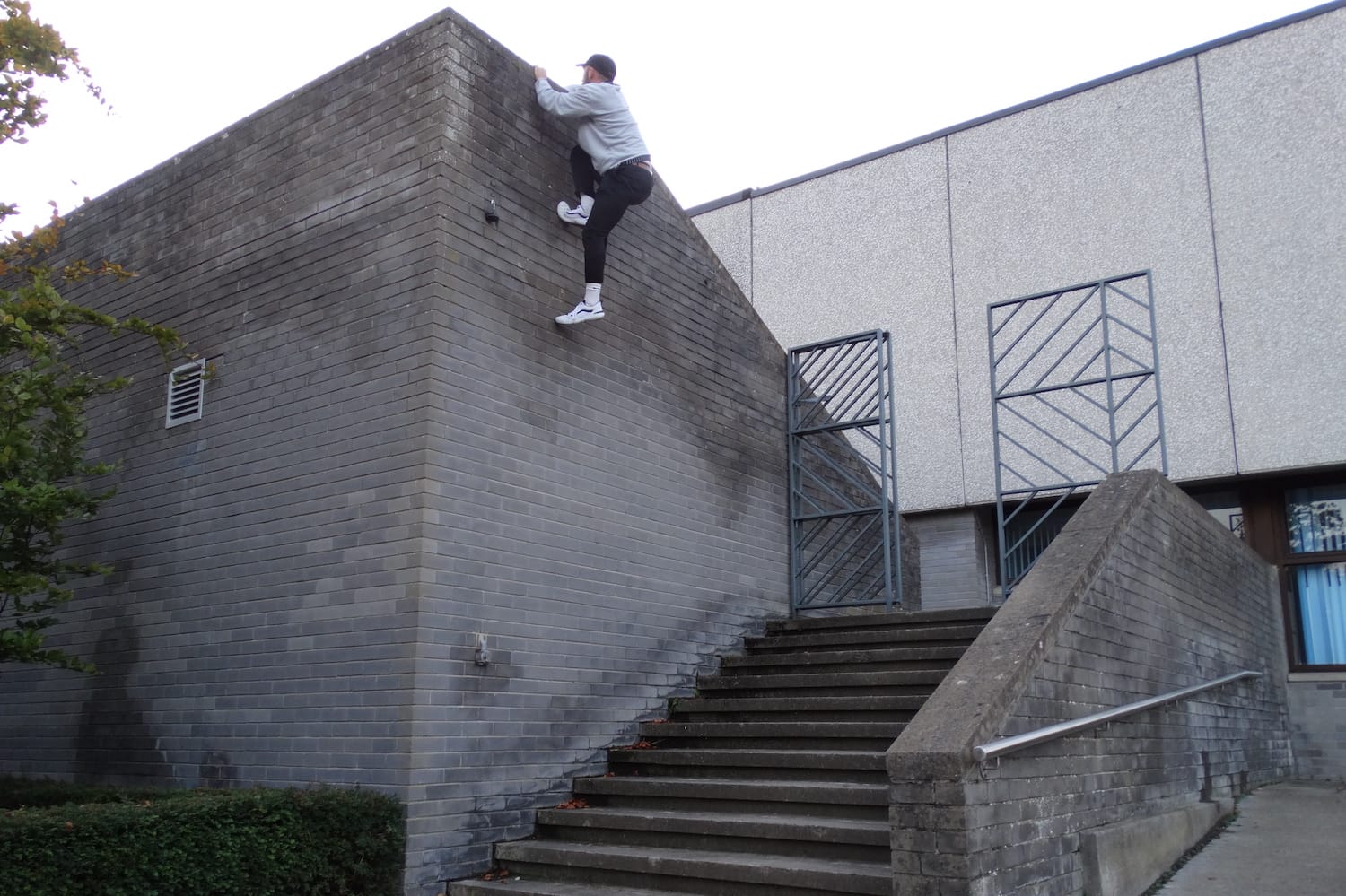What’s the best way to tell area residents about plans for a new asylum shelter nearby?
The government should tell communities directly about plans for new asylum shelters, some activists and politicians say.
For those who practice parkour in the city, lockdown has meant more freedom and space to refine their craft.

During lockdown, David Willis tumbled from rooftop to rooftop, and vaulted over scaffolding, in Dún Laoghaire. He leapt from wall to wall in Seapoint.
“Dublin is on lockdown right now but we got 5km to explore,” said Willis, a parkour enthusiast, in a video on 10 May. He’s stood on a rooftop in Dún Laoghaire about 30 feet off the ground.
“I’m not going to lie, the lockdown was pretty good in that sense,” he says, back on the ground last Thursday, as he eyes up buildings around him at University College Dublin.
Willis was obsessed with the World Wrestling Federation when he was a kid, he says. “I would watch it purely for the athleticism and the acrobatics.”
He leaned a ladder beside his garden trampoline and mimicked the jumps and flips of the wrestlers on television.
At 18, while working in a trampoline park, he was introduced to the world of parkour, and the runners and tumblers who use the streets and buildings around them as a gym.

Wallis is now 26 and works as a filmmaker.
“I’d say 95 percent of the things that I can do now is from what I taught myself,” he says.
Willis spent days repeating stunts in front of a camera and then critiquing himself, frame by frame. “Looking at what my limbs are doing and what they should be doing, the way I’m landing and where my eyes are looking,” he says.
At the Upper Lake in University College Dublin, Willis stands on the balls of his feet on a brick wall. His heels hang off the side.
“This is the way that you want to land when you’re jumping on walls. You get the most control of your balance this way,” he says.
He hasn’t had any major breaks from parkour, he says. “I’ve had more from football and rugby to be honest,” he says.
“Normally the security would just ask you to leave when they saw you doing this but during lockdown, they didn’t seem to mind,” Willis says.
He and his friends generally prefer brutalist buildings for parkour, he says.
“A lot of time the buildings are sloped and have interesting shapes with that style of architecture,” he says.
During lockdown, when strict restrictions meant that people couldn’t travel very far, popular parkour places like Stephen’s Green in the city centre and UCD emptied out, leaving room for Willis to train.
But it’s also made Seapoint near Blackrock – another favourite for traceurs as those who practice parkour are known – more difficult to train in. “Since Covid this has become crazy busy with swimmers,” says Willis.
Given restrictions, Willis and his friends can no longer train together either.
Chatting about moves is a big part of it, he says. “There is so much planning involved in just one move.”
“You tend to get inside your own head more when you’re on your own,” he says.
Interest in parkour in Ireland has ebbed and flowed over the years, says Glenn McMahon, who’s been doing it for 14 years. “I’ve seen the whole thing fluctuate.”
McMahon, or “Pickles” as he is known, is a friend and training companion of Willis’.
Covid-19 has stymied the Dublin scene, he says.
It’s harder to organise meet-ups and training sessions with the lockdown measures, he says.
Anything organised has been small numbers. “But this was only being done through word of mouth. We still didn’t want anything too big organised,” says McMahon.
Some parts of the city are becoming friendlier still to traceurs.
South Dublin County Council plans to put parkour equipment in Collinstown Park and in Ballycragh Park in Hunters Wood, with construction due to start in 2021 says a council spokesperson.
McMahon says: “I couldn’t believe it when I heard the news.”
We should be consulted, he says, as he’s been to parks in the past with embarrassing equipment. “Everything was too small and cramped together, it’s just a waste.”
“But from the pictures that I have seen so far this one looks pretty decent,” says McMahon.
Willis says the plans look great, too. But he will continue to train in urban environments.
“When you see some buildings through the lens of parkour it’s hard to imagine that it was built for anything else,” he says.
Get our latest headlines in one of them, and recommendations for things to do in Dublin in the other.